Literally it is the Best Japanese Cheesecake Recipe.Looking for an unbelievably light, super moist, soft like cotton Japanese-style cake?Hooray! It is here.
JAPANESE CHEESECAKE RECIPE
While New York Cheesecake is famous for its creamy, sweet density, Japanese Cheesecake is celebrated for something entirely different – its delicious, fluffy lightness! Also called soufflé cheesecake, a Japanese Cheesecake recipe includes meringue and cream cheese.
It usually forgoes the buttery biscuit base common to the baked New York variant. I usually cook it in a water bath to ensure that it does not dry out, but keeps its characteristic moistness throughout the baking process. Unlike many other cheesecake variations, Japanese Cheesecake does not require toppings or flavor infusions, but rather, most chefs prefer to serve it plain.
HOW TO MAKE JAPANESE COTTON CHEESECAKE
Traditionally, a Japanese Cheesecake recipe requires that you prepare the meringue in one bowl, and the batter in another. Once the two mixtures have been prepared, they are gently folded together to maintain a light, airy texture. Bear in mind that cold eggs are easier to separate. However, a cold egg is more difficult to whip into stiff peak. For this reason, I recommend that you mix the batter first, allowing the egg whites to warm to room temperature. And then get started on the meringue. Another good precaution to take is to crack the eggs, one at a time, adding the whites into a different bowl to the completed eggs to keep the mixture pure.
Adding a pinch of Cream of Tartar before beating the egg whites helps the stiffening process along very nicely. Refined sugar has a similar effect. It’s important to have a really steady hand when you are whisking the mixture. Use a standing or electric beater if you have one available. Traditionally, they beat egg whites to meringue texture in a copper bowl, but if you don’t already have one, glass will do. Fold the egg whites into the batter bit by bit. This way you will keep the light texture and keep from over-beating the Japanese Cheesecake mixture before you bake it.
While an original Japanese Cheesecake Recipe includes cream cheese, butter, milk, egg yolks and a little sugar in the batter, there are later variations that allow you to get a little more creative. Some chefs like to add in some light custard, while others like to add in some melted white chocolate. Some recipes favor sour cream, while others recommend that you add in grated lemon rind.
If you do choose to add in extra ingredients, be careful to select flavors that will not detract from the mildly sweet and vaguely tart taste of the cheesecake. This is also why unsalted butter is the best choice for the batter. You can exchange milk for cream in the Japanese Cheesecake recipe for added richness and a little bit of Cream of Tartar; cornstarch or lightweight white flour can help to create an even texture. Some pastry chefs like to melt the cream cheese before mixing the batter.
For the water bath, wrap the outside of a spring form pan in tin foil. Pour the Japanese Cheesecake mixture into the pan and place it in a roasting dish filled with water that reaches to about halfway up the Cheesecake tin. As I mentioned above, this step is what keeps the delicious moisture locked into the cheesecake. Without the water bath, the cake is much more likely to dry out and lose the creaminess that is characteristic to it.
Like a traditional, New York Cheesecake, it’s essential to bake the cake slowly. You want to the Japanese Cheesecake recipe to turn out evenly baked, smooth and creamy, so you can’t afford to rush this step. Japanese Cheesecake is also known as “soft cotton” cheesecake because of its delicate flavor, and you should treat it with care throughout the cooking process. Once you removed the cake from the oven, be sure to allow it to cool on the kitchen counter, and then refrigerate it for an hour or two. This is a dessert that’s best served cold.
Great news for all the Banters out there – this is a low carb dessert! It has very little sugar in it, and a sprinkling of cake flour at the most. It’s deliciously light in texture, and not too decadent in its calorie count. But aside from all of this, it is a wonderfully mild and delicate finale to any dinner date or gathering, so a Japanese Cheesecake recipe is a great one to have under your belt.
Although this Japanese Cheesecake recipe will recommend that you serve it plain, you can add toppings if you would like to. Steal a page from New York style cheesecake’s book and pour a generous layer of crème fraîche over the cake before leaving it to rest in the fridge for an hour or two. A dusting of fine icing sugar adds a lovely extra sweetness to the cake, and it looks very pretty too. Fruit is probably the most popular topping suggestion in a Japanese Cheesecake recipe. The cake’s light texture lends itself to fresh, fruity flavors. Chopped berries and summer fruits look lovely on top of the light yellow cake and complement its tart sweetness beautifully.
Some chefs like to add a filling to their Japanese Cheesecake recipe. The most popular of these is a blueberry comfit or jam. If you would like to add a filling to the cake, I recommend that you carefully slice the cake in half, length-ways, and spread your choice of filling evenly over the surface before replacing the top half. This is not traditional to Japanese Cheesecake, but it tastes great too!
In totality, Japanese Cotton Cheesecake has the best of both the chiffon cake and the cheesecake- it’s soft and fluffy, as well as, rich and creamy. Who could have imagined such a dessert was possible! Well, there is a glitch too. Along with the finest aspects of both cakes Japanese Cotton Cheesecake also has all the issues encountered in the process of making a chiffon cake or a cheesecake.
JAPANESE COTTON CHEESECAKE OFTEN FACES THESE ISSUES:
- Cake has troubles rising. It either goes up slightly or doesn’t rise at all. The finished cake being firm and weighty, much like the cheesecake. At times, the raw egg smell is present.
- Cake is quite sizable at the onset but reduces in size while baking.
- Cake drops in the center or contracts as soon as out of oven.
- Cake drops or deflates as soon as out of the oven.
- Cake is thick at the base.
My understanding of the issues leads to 2 core reasons:
# 1: THE EGG WHITES ARE INCORRECTLY WHISKED. Whether they are beaten more or less, both situations cause trouble. Precision is vital in this case. On top of that, the method adopted to fold the whipped egg whites play a crucial role. Incorrect folding process results in puncturing the air bubbles which in turn makes the cake slump and draw back from fluffing up.
HOW TO GET RID OF SUCH ISSUES:
For Japanese Cotton Cheesecake, the egg whites need to be whisked until it reaches the maximum point of stiffness. Otherwise, the presence of excessive fats (butter, cream cheese & heavy cream) in the batter will simply burst the egg white’s air bubbles while folding it with the rest of the ingredients (flour, egg yolk, milk etc.). The air bubbles raise the cake while baking. Thus, less air bubbles won’t make the cake rise to the desired size and result in a dense cake.
Nonetheless, too stiffly whipped egg white can also create trouble in folding it in the batter. Attempts to forcibly fold the stiff egg whites will only break the air bubbles resulting in a cake which is neither fluffy nor weightless.
Furthermore, rightly whisked egg whites merge in a stringy outline when folded in the batter. The completion of the folding process will give off a spongy textured batter (due to the presence of air bubbles) while the volume remain the same as before. In case you notice that the volume has dropped, is gooey or too bouncy, then be sure that the egg whites have been folded the wrong way or whisked too much/too less.
#2: BAKING TECHNIQUE IS WRONG. Inaccuracy in baking temperature and inadequacy in baking time, both work adversely.
HOW TO GET RID OF SUCH ISSUES:
For the 2nd issue: 2 Things must be kept in Mind-
- Japanese Cotton Cheesecake must always be baked in water bath properly
Take a tray that’s bigger than the pan. Pour hot water in the tray till it reaches about half/one-third of the pan’s height. Place everything in the oven and set the accurate baking time and temperature. Reasons for the water bath baking technique-
- Japanese Cotton Cheesecake requires a slow and gradual baking process for it contains excessive fat and fluids. Water bath method provides the slow baking needed as otherwise the oven’s high temperature will over-bake the cake at the bottom and the sides while leaving the center under-baked.
- The hot water produces steam which saves the humidity in the cake’s bottom, saving it from drying up and cracking, thus letting the center bake steadily.
Tip: Don’t use a baking pan with removable bottom as water will enter the pan giving you a cake with soggy bottom. Even double foil wrapping won’t work (tried it already).
I did try some other ways like switching the tray for a smaller water cup, but it didn’t work as the steam produced wasn’t enough to maintain the cake’s moisture. With several trials and error, I figured that it’s best to stick to the traditional water tray method for the perfectly moist Japanese Cotton Cheesecake.
- Be watchful when setting baking time and baking temperature.
The center-dent issue (cake shrinks, collapses, deflates etc.) occurs due to inadequate baking time &/or temperature (extreme temperature or big pan used in small oven).
To bake Japanese Cotton Cheesecake, be patient. This special cake slow-bakes and takes double the baking time compared to other simple cakes. So, if a normal cake takes 45 minutes to bake, Japanese Cotton Cheesecake would take 90 minutes. Don’t go by the luscious golden color as on the inside it will be under-baked. The moisture will make it sink. So,
- Control yourself from the habit of opening the oven too early
- Wait! Avoid taking out the cake anytime before it’s fully baked
Tip: Don’t under-bake, slight over-baking is better.
For an Idea: A 6 egg cake would take approx. 70-80 minutes to bake when placed in a 20 cm pan, temperature being 160-165°C/320-325°F. Personally, after switching off the oven, I kept the cake in the oven for 15-20 minutes more. If you are using a small-sized oven, baking time should be increased while temperature decreased.
Closing Key Suggestion:
Know your Oven Inside-out. This is extremely necessary for accurate temperature adjustments.
3 Don’ts-
- High oven temperature (sinks cake)
- Too low temperature (dense outside, half-baked inside)
- Baking for less time (little over-baking is all right)
I am positive that these information, tips and suggestion would come in handy when first attempting at baking Japanese Cotton Cheesecake. Best of luck, Fingers crossed!
As I wrap up, I would like to share some bits on the cake’s ingredients. I tried my hand on multiple versions, one with milk, butter and cream cheese turned out excellent. I feel lucky to have tasted a Japanese cotton cheese soufflé in a Tokyo bakery. It didn’t have cheesecake, was super soft and fluffy, and had a unique taste that was amazingly delicious. The craving to recreate that Japanese cheese soufflé flavors resulted in me trying various new combination of ingredients. Ultimately, I came up with the recipe which I have shared in this post.
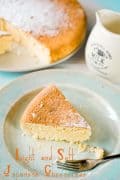
JAPANESE CHEESECAKE RECIPE
Description
“Japanese Cotton Cheesecake melts in your mouth”, was what my friend had said as he passed a slice of the same for me. I was like, really? After I had finished gulping down the piece, this yellow slice of edible goodness became my most loved cake.
Ingredients
- Large eggs- 6 ( separated)
- Unsalted butter- 60 gm or 4 tbsp
- Low fat milk- 100 ml or 7 tbsp
- Cream Cheese ( Philadelphia)- 260 gm or 1 ⅛ cup
- Cake flour- ¾ cup
- Salt-¼ tsp
- Lemon juice- 1 ½ tbsp
- Lemon Rind- 1 tsp
- Cream of Tartar- ½ tsp
- Granulated White sugar ¾ cup
Instructions
- Separate 6 cold large eggs. Cover the bowls with plastic and leave for 20-25 minute( to bring them to room temperature).
- Part 1
- Take a medium pan. Transfer cream cheese, butter and milk into it. Melt on a double boiler or in the microwave. Set aside and allow to cool.
- Part 2
- Sift together cake flour with salt.
- Preparation
- Preheat your oven to 325 F / 160 C.
- For baking this cake we will need a 9-inch x 3-inch round cake pan. Spray it with with a non-stick cooking spray.
- Transfer cream cheese mixture to the bowl of your electrical mixer. Beat on medium speed with the flat beater attachment to get rid of any small lumps in cream cheese mixture. Add sifted flour and continue beating. Gradually add ¼ cup sugar, egg yolks and lemon juice. Beat until smooth. Transfer the mixture to another large bowl.
- Wash the bowl of your electrical mixer. We will need it for beating egg whites. So it should be absolutely clean, dry.
- Transfer egg whites to the bowl, beat on medium speed with the wire whip attachment until foamy. Add cream of tartar and continue beating for another 10-15 seconds until soft peaks form. Gradually add the remaining sugar ( ½ cup) and beat till stiff peaks.
- Now gently fold a little of the beaten egg whites into the cream-cheese batter. Add the rest of the whites, folding just until well incorporated.
- Pour the Japanese cheesecake batter into the baking pan.
- Take a larger dish, place the cake pan onto it.Pour hot water into the dish.Be very careful not to splash some water into our batter. Half of the cake pan should be in water.
- Bake 70-80 minutes at 160 C /325 F.
- Turn off the oven and leave the cheesecake in the oven for another 30 minutes.
- Remove from the oven. Take it out of the cake pan & transfer onto a cake plate.
- This cheesecake can be stored in the fridge using an airtight container for a few days.
Notes
Common problems, causes and solutions:
1. Cake mounts up a lot still drops in the oven: Baking temperature/upper heat is more than required; or Cake is set near upper heat.
2. Cake doesn’t go up, turns out rubbery or thick: Either egg whisking/folding method is wrong which in turn burst the break bubbles.
3. Cake grows to full size, but as soon as out of oven it drops (also has egg stench): Baking time is inadequate.
4. Surface cracks: (Most likely) the water bath tray is short of water.
To have a crack-free perfectly baked Japanese Cotton Cheesecake surface, line the cake pan’s sides with parchment paper. For the starting two-third of the baking time only bottom heat the pan. Just as the cake completely mounts up and the surface color is gold-like, switch to top heat.
- Category: Cakes
- Cuisine: Japanese cuisine
Nutrition
- Serving Size: 1
- Calories: 263
- Sugar: 21
- Sodium: 141
- Fat: 14
- Saturated Fat: 8
- Unsaturated Fat: 1
- Trans Fat: 0
- Carbohydrates: 28
- Fiber: 0
- Protein: 6
- Cholesterol: 143












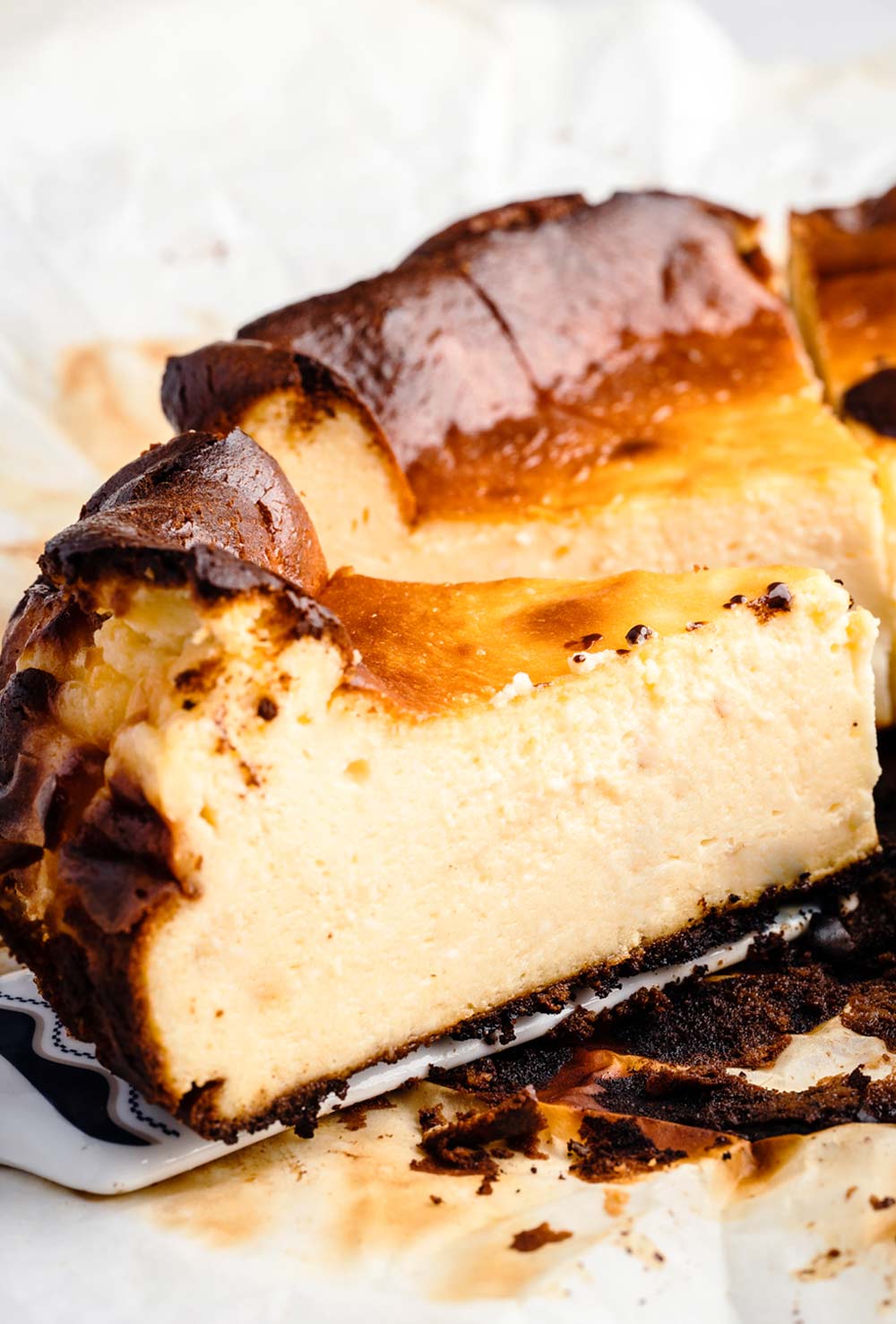
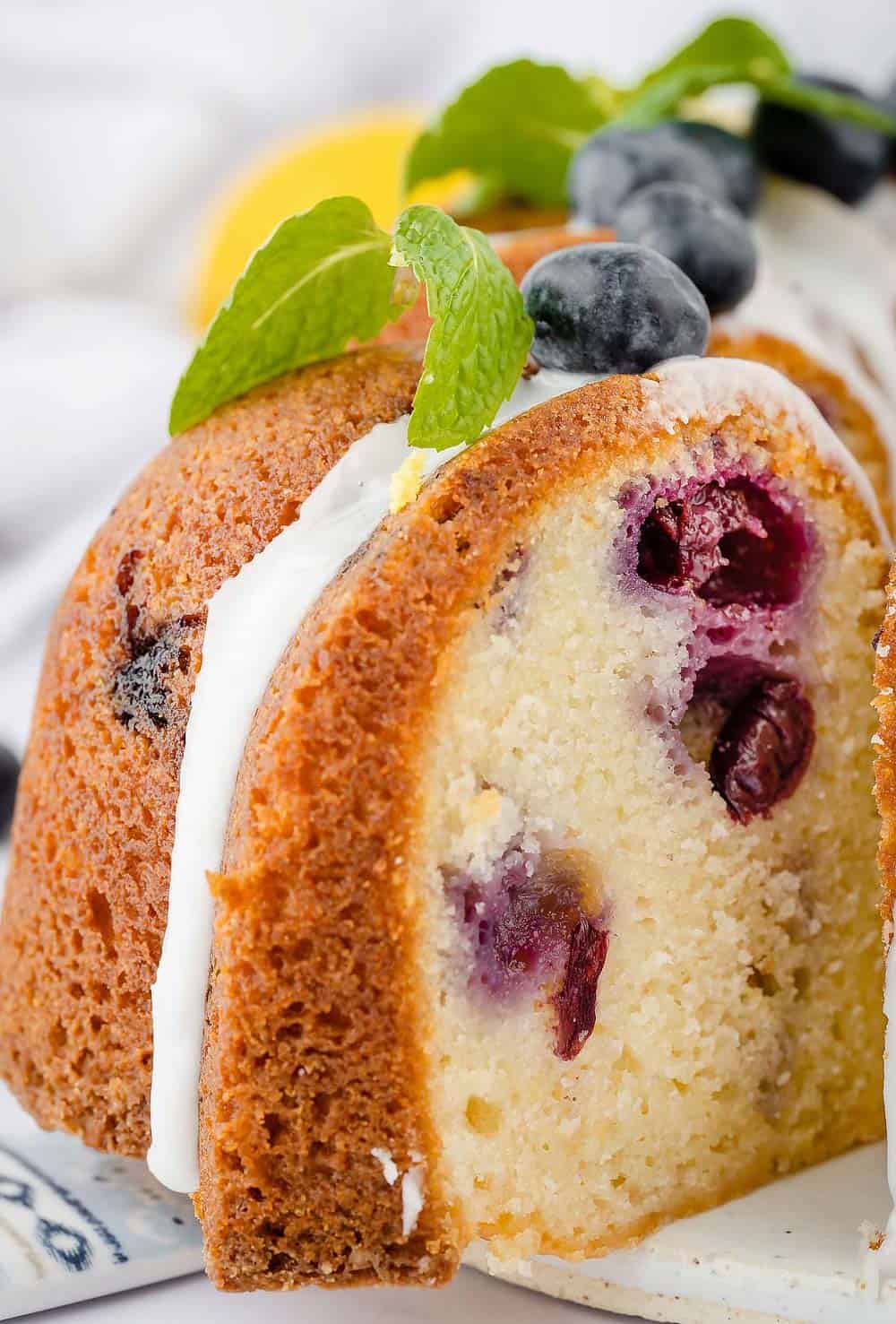
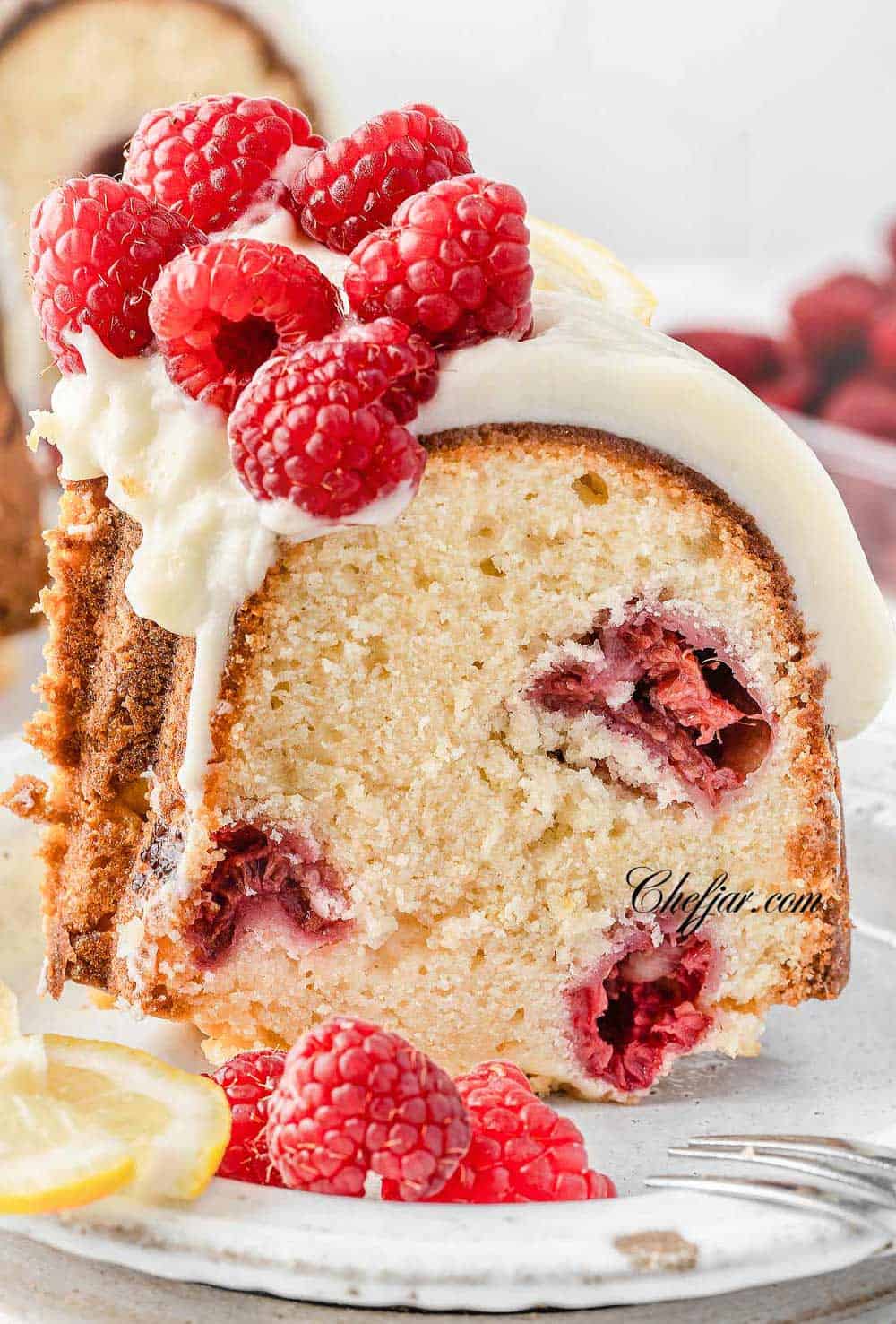
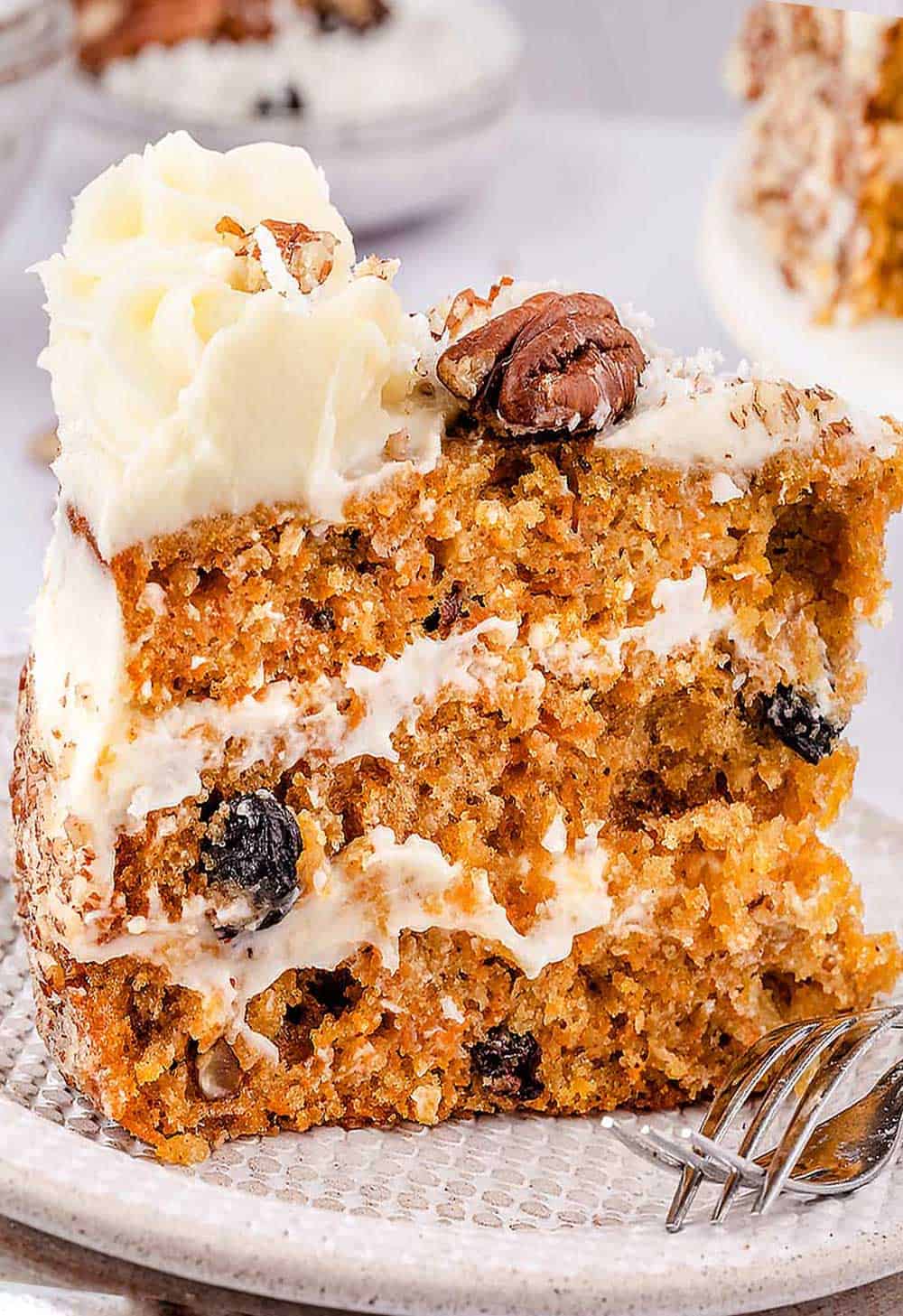
Leave a Reply